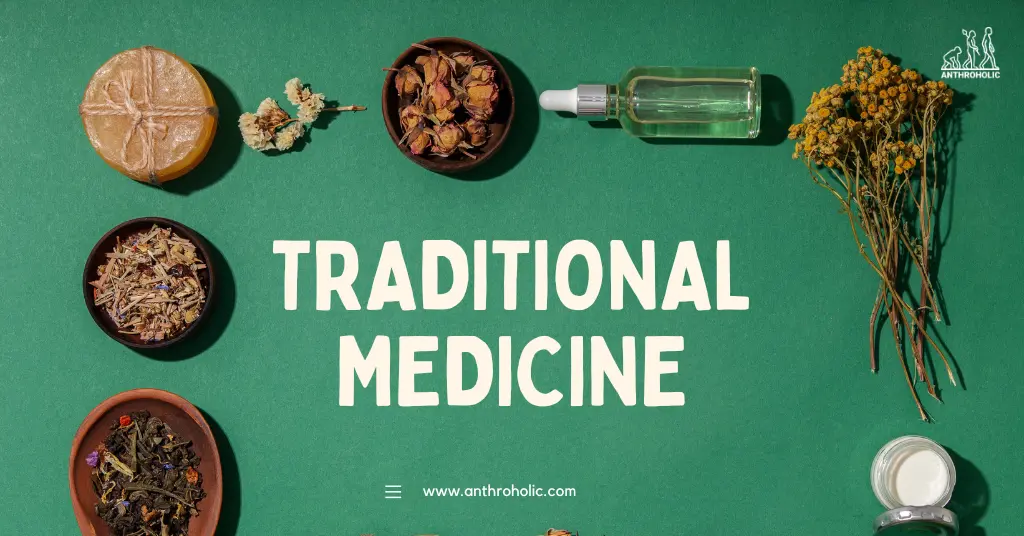
The Enduring Spirit: Traditional Medicines of Turtle Island – A Holistic Path to Wellness
Turtle Island, the indigenous name for the North American continent, is a land steeped in ancient wisdom, where the rhythms of nature have long dictated the pulse of human life and healing. For millennia, the diverse Indigenous nations of this land have cultivated sophisticated systems of traditional medicine that transcend mere physical ailments, embracing a profound holistic philosophy that interconnects body, mind, spirit, community, and the natural world. Far from being a relic of the past, these vibrant healing traditions are experiencing a powerful resurgence, offering profound insights and vital pathways to wellness in the modern era.
At the heart of Turtle Island’s traditional medicine lies the concept of interconnectedness – often encapsulated by the Lakota phrase "Mitakuye Oyasin" or "All My Relations." This worldview posits that all beings, animate and inanimate, are part of a grand, intricate web of life. Illness, therefore, is not merely a biological malfunction but a symptom of imbalance within an individual’s relationship to themselves, their community, or the natural world. Healing, consequently, involves restoring this harmony, addressing not just the physical manifestation of disease but also its spiritual, emotional, and mental roots.
Unlike the reductionist approach often characteristic of Western biomedicine, traditional Indigenous medicine never separates the body from the spirit. A physical ache might be understood as a spiritual blockage, a mental distress as a disconnect from community, or an emotional wound as a disruption of one’s relationship with the land. Healers, known by various titles such as Medicine People, Shamans, or Elders, are not just diagnosticians but spiritual guides, cultural custodians, and master herbalists, possessing an encyclopedic knowledge passed down through generations via oral traditions, observation, and direct experience.
The pharmacopeia of Turtle Island is vast, drawing from the continent’s rich biodiversity. Indigenous peoples developed an unparalleled understanding of the medicinal properties of plants, often through rigorous experimentation and spiritual guidance. Plants are not seen as inert chemical factories but as living relatives, possessing spirits and wisdom, and are harvested with respect, gratitude, and ceremony.
Among the most revered are the "Four Sacred Medicines":

- Sweetgrass (Wīxashk Ōtewīkīhkan): Known for its vanilla-like scent when burned, sweetgrass is used for purification and attracting positive energies. It is often braided, representing mind, body, and spirit coming together.
- Sage (Salvia spp.): Utilized extensively for smudging – a ceremonial burning of dried herbs to cleanse negative energy, purify spaces, and prepare for ceremony or prayer. Its strong, pungent aroma is believed to ward off bad spirits and negativity.
- Cedar (Thuja plicata, Juniperus scopulorum): Used in purification rituals, cedar is believed to remove negative energies and create a sacred space. Its smoke is thought to be a powerful purifier and a bringer of good dreams.
- Tobacco (Nicotiana rustica, Nicotiana tabacum): Unlike commercial tobacco, traditional ceremonial tobacco is seen as a sacred plant, a primary offering to the Creator and a bridge between the physical and spiritual worlds. It is never inhaled but offered in prayer, used to seal agreements, or given as a gift of respect when asking for guidance or knowledge from an Elder.
Beyond these sacred plants, Indigenous healers utilized a multitude of herbs for specific ailments. Willow bark, for instance, known for its anti-inflammatory properties, was chewed or made into a tea to alleviate pain and fever – a traditional use that predates and parallels the discovery of aspirin’s active compound, salicylic acid. Echinacea, a powerful immune booster, was widely used for infections and wounds. Cranberry was recognized for its ability to prevent urinary tract infections long before Western science confirmed its benefits. These are just a few examples of Indigenous botanical knowledge that has been adopted, often without proper attribution, into modern pharmacology.
Ceremonies and rituals form another cornerstone of Indigenous healing. These are not merely symbolic acts but potent spiritual interventions designed to re-establish balance and facilitate healing on multiple levels. The Sweat Lodge (Inipi), for example, is a powerful purification ceremony involving intense heat, steam, and prayer within a dome-shaped lodge, symbolizing the womb of Mother Earth. It is a space for physical detoxification, emotional release, spiritual renewal, and community bonding. Vision Quests, often involving fasting and solitude in nature, are undertaken to seek spiritual guidance, discover one’s purpose, and gain profound insights. Drumming, singing, storytelling, and dancing are also integral to many healing ceremonies, acting as conduits for spiritual energy and communal well-being.
The knowledge and practice of these medicines are entrusted to Medicine People and Elders, individuals who have dedicated their lives to learning and serving their communities. Their training is rigorous, often involving years of apprenticeship under a seasoned elder, deep spiritual practice, and an intimate relationship with the land and its plant life. They are not merely technicians but possess a deep understanding of human nature, psychology, and spiritual dynamics, acting as counselors, intercessors, and wisdom keepers. Their authority is earned through humility, integrity, and demonstrated healing ability, rather than academic degrees.

The arrival of European colonizers brought devastating impacts to these intricate systems of healing. Policies of forced assimilation, the banning of cultural practices, the destruction of sacred sites, and the imposition of residential schools aimed to eradicate Indigenous languages, spiritual beliefs, and traditional medicines. Children were punished for speaking their languages or practicing their ceremonies, leading to intergenerational trauma and a profound disruption in the transmission of traditional knowledge. As one survivor of residential schools recounted, "They tried to beat the Indian out of us, and part of that was forbidding our traditional medicines and ceremonies. It felt like they were trying to kill our spirit."
Despite these brutal attempts at suppression, Indigenous traditional medicines have demonstrated incredible resilience. In recent decades, there has been a powerful revitalization movement across Turtle Island. Communities are reclaiming their languages, ceremonies, and healing practices, recognizing them as essential components of cultural identity, sovereignty, and well-being. Elders, who bravely held onto the knowledge in secret, are now openly teaching younger generations, ensuring the continuity of these vital traditions.
This resurgence is particularly crucial in addressing contemporary health challenges faced by Indigenous communities, such as high rates of diabetes, cardiovascular disease, and mental health issues, often exacerbated by the historical trauma of colonization. Traditional medicines offer culturally relevant and empowering approaches to these issues, complementing Western medical interventions by addressing the holistic needs of individuals and communities. For instance, ceremonies can provide a sense of belonging and spiritual grounding that can be profoundly healing for those struggling with addiction or mental health concerns. The emphasis on healthy living, respect for the body, and connection to the land inherent in traditional practices also promotes preventative health.
The integration of traditional Indigenous medicine with Western healthcare is a growing area of interest. Many healthcare providers are recognizing the importance of cultural competency and the value of Indigenous healing practices in providing patient-centered care. Initiatives are emerging where traditional healers work alongside Western doctors, offering complementary therapies and cultural support, particularly in areas like palliative care, mental health, and chronic disease management. However, this integration must be approached with profound respect, ensuring that Indigenous knowledge is not appropriated or commodified but rather honored and protected. The United Nations Declaration on the Rights of Indigenous Peoples (UNDRIP) explicitly affirms the right of Indigenous peoples to maintain, control, protect, and develop their traditional medicines and health practices.
Looking ahead, the future of traditional medicines on Turtle Island is one of renewed strength and profound significance. It involves protecting sacred lands where medicinal plants grow, ensuring biodiversity, supporting the transmission of knowledge to youth, and fostering an environment where Indigenous peoples can freely practice and benefit from their ancestral healing ways. These medicines are not just about treating illness; they are about maintaining a way of life, a deep spiritual connection to the land, and a robust cultural identity.
In a world increasingly seeking holistic solutions to complex problems, the ancient wisdom of Turtle Island offers a timeless blueprint for health and harmony. It reminds us that true wellness stems from balance – balance within ourselves, with our communities, and with the Earth itself. The enduring spirit of traditional Indigenous medicines stands as a powerful testament to resilience, wisdom, and the unbreakable bond between humanity and the natural world, continuing to guide a path to wellness that is as relevant and vital today as it has been for millennia.


